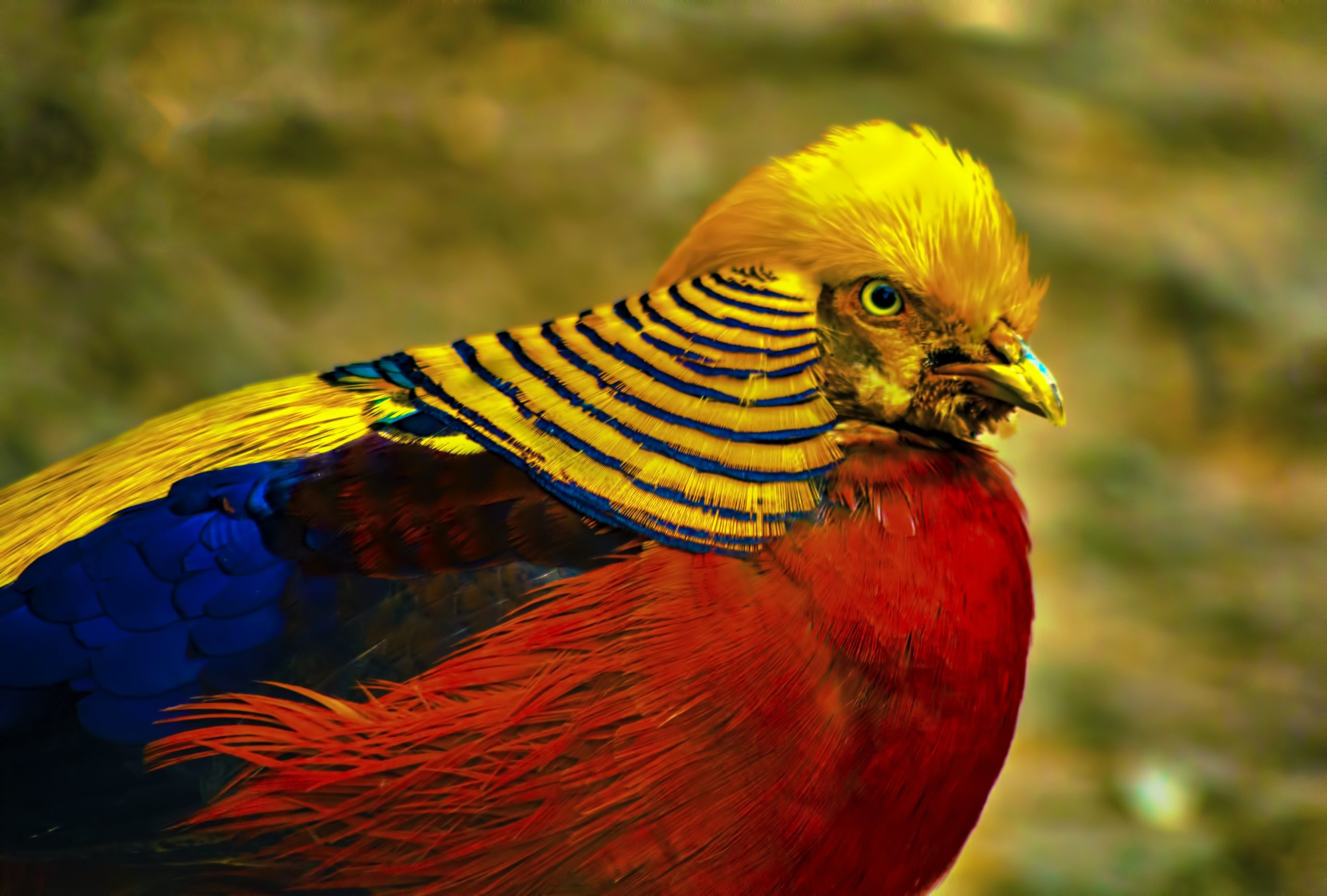The golden pheasant is also known as Chrysolophus pictus or Chinese pheasant, or rainbow pheasant. The name of the bird of this genus comes from the ancient Greek chrusolophos. It is native to the mountainous forests of western China. However, the population of this species has increased in the United Kingdom, Canada, the United States, Mexico, Colombia, Peru, Bolivia, Chile, Argentina, Uruguay, and the Falkland Islands.

They have a presence in the Netherlands, France, Ireland, Australia and New Zealand. It can be found in the dense woodlands of East Anglia, England, as well as in Tresco in the Isles of Sicily.
Adult males are 90–105 cm (35–41 in) long, with the tail accounting for two-thirds of the total length. You will be mesmerized by its bright red body. Adult females are 60–70 cm (24–28 in) long and weigh about 350 g. Males weigh around 500-700 grams.
Males have reddish or golden-yellow plumage. The skin of the bird is light yellow and orange in color. The upper part of the back is green, and the rest is golden-yellow in color. Other characteristics of the male plumage are the central tail feathers.
They survive by eating grains, leaves, and small invertebrates in the soil. But they roam the trees at night. In winter, flocks of the bird fly close to human settlements at the edge of the forest. The golden pheasant primarily eats wheat leaves and seeds. Most of their species prefer to spend time on the ground.
The golden pheasant prefers to hide from predators. When startled, they can suddenly fly upwards with great speed and a distinctive wing noise. Golden pheasants lay 8 to 12 eggs at a time. They tend to eat berries, seeds and other small plants.
